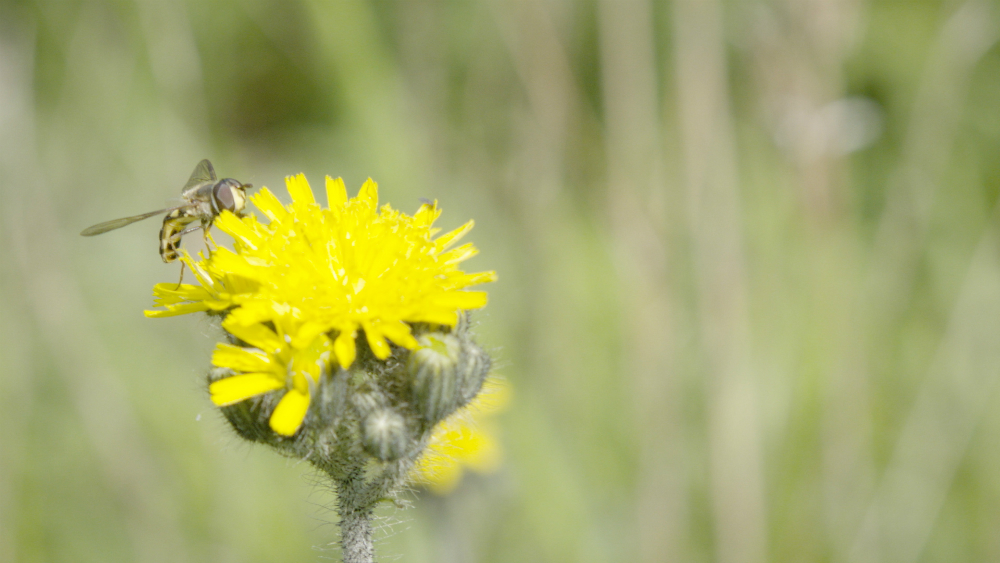Pollinator Habitat the Focus of First-of-its-kind Rights-of-Way Sustainability Summit

Key utility industry stakeholders gather in state college to collaborate on ways to help revive pollinator species.
Key utility industry stakeholders gather in state college to collaborate on ways to help revive pollinator species.
There’s an estimated 9 million acres of utility rights-of-way crisscrossing the U.S. While these lands serve a vital purpose in delivering the nation’s electricity, when managed properly, they may also be the answer to turning the tide on declining populations of bird and pollinator species.
This opportunity brought about the inaugural Rights-of-Way Sustainability Summit, which took place June 5-6 in State College, Pennsylvania, presented by Corteva Agriscience, First Energy, Penn State University, PECO Energy Company and Asplundh. Attendees included organizations like the National Fish and Wildlife Foundation, the Utility Arborist Association and the ROW Habitat Group. The summit consisted of research presentations and working sessions, as well as a field tour of the Pennsylvania State Game Lands 33 (SGL 33) research project.
“This gathering was an opportunity to see firsthand the impressive research being done at State Game Lands 33, but more importantly to collaborate with other industry leaders on applying its learnings to rights-of-way across the country,” says Damon Palmer, U.S. Business Leader, Pasture & Land Management, Corteva Agriscience. “What’s been established at SGL 33 over more than 60 years proves that when managed using Integrated Vegetation Management (IVM) principles, rights-of-way can play a critical role in helping preserve wildlife habitat, including pollinator species.”

The State Game Lands 33 (SGL33) is the longest continuous research of its kind. It started in 1952 when hunters expressed concerns over the impact vegetation management practices might have on wildlife habitat within electric transmission rights-of-way (ROW). Since its inception, SGL 33 has established valuable management principles for electric ROW, including Integrated Vegetation Management (IVM) using herbicides as a best management practice for ROW.
“The key with IVM using herbicides is the selectivity it provides — you can use herbicides to target only particular non-compatible species and let the native vegetation grow,” says Dr. Carolyn Mahan, Professor of Biology and Environmental Studies at Penn State University and SGL 33 Principal Investigator. “We’ve also found that over time as we use herbicides selectively, we need fewer and fewer of them as we start to develop a stable plant community that is dominated by forbs, herbaceous vegetation and compatible shrubs, which is excellent native habitat for wildlife and pollinators.”
In recent years, SGL 33 has turned its attention to pollinators, as global populations continue to decline. Researchers have found the use of selective herbicide applications to be especially effective in establishing and maintaining early successional plant species on ROW, making these areas highly desirable to important wildlife, such as amphibians, reptiles, birds, deer and pollinators.
“It was eye-opening to see the abundance of pollinators present on the SGL 33 rights-of-way — everything from butterflies to bees to beetles,” Palmer says. “SGL 33 serves as a proving ground for how herbicides can be a key tool to maintain critical habitat, while at the same time helping keep the power flowing.”
Those in attendance also previewed the new Pollinator Habitat Scorecard, developed by the ROW Habitat Group to help guide vegetation managers in the assessing, developing and maintaining a pollinator habitat program on managed ROW. The scorecard is especially timely as the monarch butterfly is currently under review for addition to the Endangered Species List, with a decision now expected in the next 18 months.
In addition to sponsoring the Rights-of-Way Sustainability Summit, Corteva has supported the SGL 33 research project for more than 40 years.
Pollinators help feed the planet — delivering an estimated 1/3 of all food and beverages. We talked with Dr. Carolyn Mahan with Penn State Univ., and she explained how pollination works with native plant species found on many rights-of-way.
For over 30 years, Vistas® has covered strategies, trends and stories from across the Vegetation Management industry.